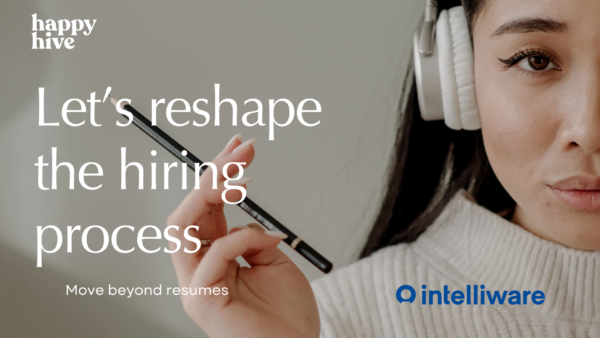Banking CTOs are finding that balancing bold AI innovation with rigorous oversight is quickly becoming the only viable path to deliver value.
Under intense pressure to modernize services while complying with strict regulations, technology leaders find that innovation without embedded governance can backfire badly. For instance, a recent Forrester analysis predicts that at least ten U.S. banks will run into regulatory trouble or consumer lawsuits in 2024 because employees or vendors deployed generative AI without proper controls.
These costly mistakes erode trust and invite fines. It underscores that compliance and innovation are not at odds. They must reinforce each other from day one. CTOs who pair ambitious AI projects with equally rigorous model risk oversight accelerate innovation with confidence, avoiding compliance setbacks and creating sustainable business impact.
Innovation without oversight invites costly mistakes

When AI experiments race ahead without proper checks, missteps become inevitable. One misconfigured model or unchecked algorithm can introduce biased lending decisions or leak sensitive data before anyone realizes. Often, risk and engineering teams work in silos. As a result, oversight comes as an afterthought, far too late to prevent errors. Analysts caution that well-meaning staff or vendors can inadvertently trigger serious issues if AI projects aren’t governed end-to-end. These lapses run the gamut from unintentionally exposing customer information to embedding bias that violates fair lending laws. Modern AI models are also notoriously opaque, making it easy for teams to run afoul of internal controls without even realizing. The result is costly cleanup. Regulatory fines pile up, remediation projects drain resources, and public trust is eroded by the perception that the bank cannot manage its own technology. No CTO wants to explain to the board why a cutting-edge AI initiative became the next headline-grabbing compliance failure.
Make risk oversight a catalyst, not a roadblock

Ironically, robust oversight can speed up innovation by preventing the false starts and do-overs that occur when compliance problems surface late. Instead of viewing risk management as a hurdle, savvy technology leaders treat it as a strategic advantage that keeps projects on track. Gartner research backs this up, finding that lacking an AI governance framework often increases costs and leads to failed initiatives. In contrast, when risk and engineering teams co-create from the outset, engineers can build confidently within agreed guardrails rather than guessing and reworking features after-the-fact.
This proactive approach turns oversight into a catalyst for innovation. Even regulators echo this mindset. One U.S. banking regulator recently urged teams to “build the brakes while building the engine” of new AI solutions. In practice, this means embedding compliance checkpoints into each project phase and engaging with regulators or auditors early, so there are no last-minute surprises. By inviting risk experts to the table on day one, CTOs ensure that novel ideas are shaped to meet regulatory standards from the start. The payoff is faster approvals, fewer surprises, and a reputation for delivering cutting-edge capabilities without breaking the rules.
Bring risk oversight into every sprint for safer innovation

Moving fast should not mean breaking things in a regulated industry. The solution is to weave risk considerations into each step of the software development lifecycle, especially within agile sprints. Forward-thinking engineering teams are implementing processes to make every sprint a safety check as well as a development cycle:
- Cross-functional squads: Embed risk and compliance specialists directly into agile teams so oversight happens in real time rather than as a late-stage audit.
- Risk requirements: Define clear compliance and ethical requirements alongside user stories at sprint planning, giving engineers concrete targets for responsible AI behavior.
- Continuous testing: Validate AI models and data outputs for bias, stability, and regulatory compliance during each sprint to catch issues early.
- Automated guardrails: Integrate automated checks (for data privacy, bias detection, security vulnerabilities) into the CI/CD pipeline to enforce standards with every code commit.
- Risk-inclusive demos: Involve risk officers or compliance leads in sprint reviews and demos to get immediate feedback on new features and address concerns before release.
- Retrospective learning: Use sprint retrospectives to review any risk-related findings and update development practices, creating a culture of continuous improvement in model risk management.
Treating every iteration as an opportunity to address risk means organizations ensure that innovation stays safe. Small course corrections in each sprint prevent massive rewrites later, and teams build solutions that are compliant by design. This approach not only satisfies regulators but also frees innovators to focus on delivering value, knowing that guardrails are firmly in place.
Responsible AI turns oversight into business value

Build trust, boost growth
Strong oversight doesn’t just avoid penalties; it actively builds confidence among customers, investors, and regulators. When a bank demonstrates that its AI is transparent, fair, and secure, stakeholders respond with greater loyalty. In fact, 90% of consumers say they will not do business with an organization that fails to protect data properly. By committing to responsible AI practices, financial firms earn a seal of trust that translates into customer retention and brand differentiation. Regulators, too, are more inclined to greenlight new initiatives when an institution has a track record of diligent model risk management.
Lower risk, higher returns
Embedding governance into AI initiatives also delivers direct financial benefits. Proactive risk management means fewer costly incidents and less operational waste. Instead of scrambling to fix compliance breaches or withdraw flawed products, teams can spend more time enhancing services and capturing market opportunities. In other words, every dollar saved on fines or failure recovery is a dollar that can be reinvested into innovation. Moreover, models developed under stringent oversight tend to perform better. For instance, by eliminating bias, a bank can expand its customer base and tap into underserved markets ethically. Over time, these efficiencies compound into a significant edge in the financial services arena.
Freedom to innovate responsibly
Perhaps the greatest payoff for CTOs is the freedom that comes from knowing robust controls have their back. With solid model oversight, technology leaders can pursue cutting-edge AI applications (from personalized financial advice to real-time fraud detection) without constantly worrying about compliance landmines. Many banks are even using AI to strengthen oversight itself, with 71% deploying AI for tasks like regulatory compliance and risk prevention. This creates a virtuous cycle. AI makes risk management more effective, which in turn allows bolder innovation. When oversight is woven into the fabric of every project, big ideas don’t get bogged down by second-guessing. Instead, they launch faster and deliver value securely, giving the organization first-mover advantage without the typical downside risks.
Electric Mind’s engineering-led oversight approach
This philosophy of uniting bold innovation with built-in governance defines Electric Mind’s approach to AI solutions. Weaving compliance into every project phase, Electric Mind’s interdisciplinary teams of engineers and domain experts break down the silos between tech and risk. They start by establishing clear ethical and regulatory guardrails, then architect systems with transparency and auditability at their core. With decades of hands-on experience in high-stakes, regulated environments, our teams know how to deliver advanced banking applications without ever compromising on compliance or ethics. The result is AI innovation that moves swiftly from idea to implementation – not stalled by red tape, but fully supported by stakeholders and regulators.
Importantly, this engineering-led oversight doesn’t slow things down as it propels progress. Building governance into the fabric of each solution means this approach gives CTOs the confidence to pursue ambitious initiatives that stand up to scrutiny. Pain points like opaque models and disconnected risk processes are addressed upfront, freeing you to focus on business growth instead of firefighting compliance issues. We partner with you as a co-creator, not just an advisor, ensuring that every AI system we deliver is both cutting-edge and bulletproof. In an era where speed and trust determine success, our approach equips financial institutions to achieve both , accelerating time to value while cementing the integrity that lasting success demands.
Common Questions
How do I build AI in banking without risking my licence or reputation?
You protect growth by baking model risk oversight into design, data, and deployment from day one. Start with clear guardrails for fairness, security, and auditability, then automate controls in CI/CD so checks run at the same speed as code. Treat risk reviews as part of sprint rituals, not late-stage hurdles. Electric Mind helps you turn guardrails into acceleration so projects move faster and pass scrutiny.
What is the simplest way to start model risk oversight for my first genAI pilot?
You keep it simple with a lightweight charter that names critical risks, required controls, and measurable acceptance criteria. Add bias, privacy, and stability tests to your pipeline and track them in the same dashboards your engineers use. Involve risk leads in sprint demos so feedback lands before release. Electric Mind sets up this scaffolding quickly so your pilot ships on time and stays compliant.
How do I align my engineering team and our risk team without slowing down work?
You solve the handoff problem by embedding a risk specialist into each squad and agreeing on shared definitions of acceptable model behaviour. Convert policy into testable requirements so developers see exactly what to build. Run short, frequent reviews tied to sprint cadence, not quarterly audits. Electric Mind structures this collaboration so your teams remove rework and hit time to value.
What oversight should I add for third party models I already procured?
You treat vendors like internal teams and insist on documentation, monitoring hooks, and reproducible tests. Ask for dataset lineage, evaluation methods, and model update processes, then validate with your own challenge sets. Wire the model into your monitoring stack so drift and performance shifts surface early. Electric Mind standardizes these checks so vendors integrate cleanly and are held accountable.
How do I prove the ROI of balanced AI innovation and model risk oversight?
You tie oversight metrics to outcomes your CFO cares about, such as faster approvals, reduced incidents, and higher adoption. Track lead time from idea to release, model quality against business KPIs, and the cost avoided from prevented issues. Share a simple scorecard with executives to keep funding strong. Electric Mind builds these metrics into your delivery flow so ROI is visible and defensible.
.png)



.png)
.png)
.png)
